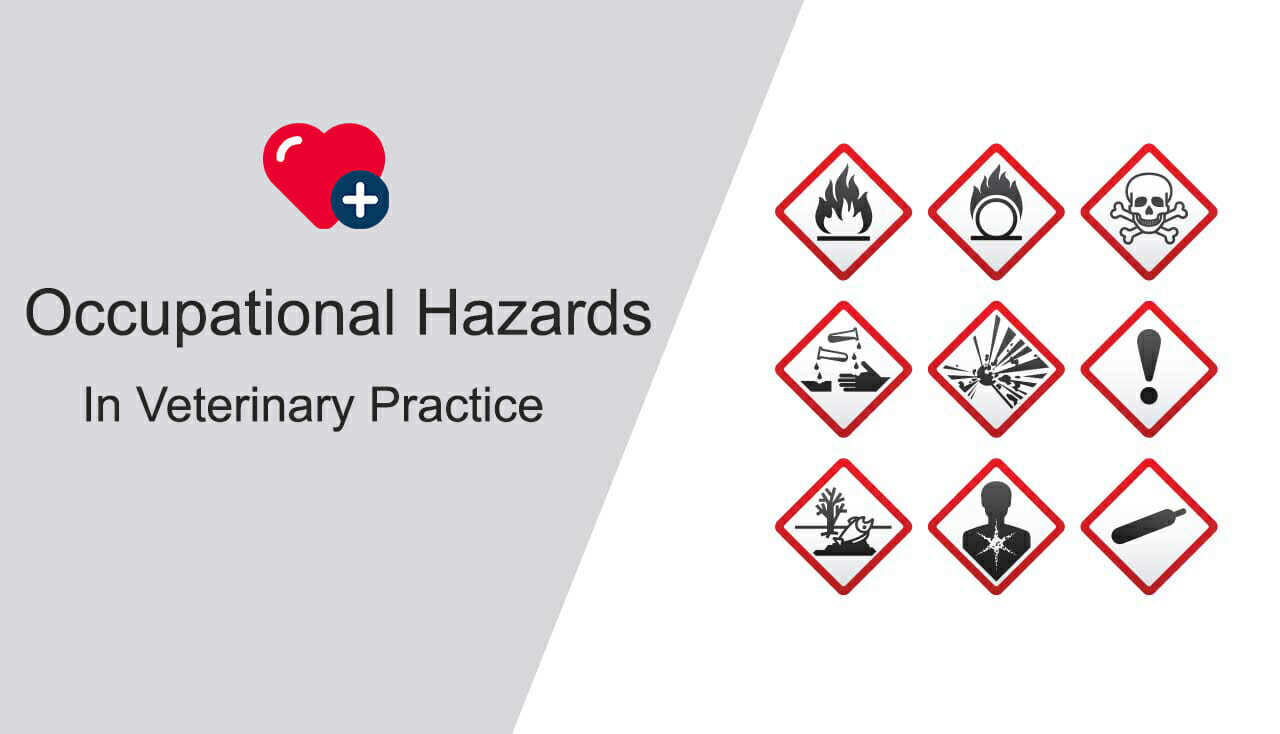Occupational Hazards in Veterinary Practice

Occupational Hazards in Veterinary Practice. In the veterinarian’s line of work, they are at risk for many occupational hazards. The hazards of being a vet are many and varied, some more serious than others. From dealing with animals almost daily to using large amounts of medical equipment, veterinarians are always at risk. These risks can range from things like contact dermatitis or allergic reactions to animal dander and being exposed to neurotic animals like rabies dogs. But Veterinarians are doing their duties irrespective of these problems. In this blog post, we will discuss some occupational hazards that you will face being a veterinarian.
What Are The Occupational Hazards in Veterinary Practice?
Occupational environments can be considered the sum of external conditions and influences that prevail at work. These factors have an impact on one’s health, especially if they are negative ones, such as noise pollution from machinery or high temperatures in the summertime when you’re outside all day long with little shade available.
Veterinarians in their occupational environment are constantly exposed to factors that can be adverse. They may not even know what the hazards they are exposed to are. The health hazards veterinarians are exposed to are
Disease Due To Physical Agents
Radiation (X rays)
X-rays are a powerful form of radiation that can damage DNA and cause mutations, leading to cancer later in life. For this reason, X-ray machines were once only available at hospitals because they were considered carcinogenic. Carcinogens are substances that may lead directly or indirectly towards developing one or more types of cancer. If a veterinarian is continuously exposed to X-ray radiation, he is at continuous risk of getting cancer.
Related Book: Radiation Protection in Veterinary Medicine
Injuries And Accidents
The veterinarian’s work is extremely dangerous. They are at risk for bites, scratches, and other injuries from wild animals in zoos or kennels that they may be working with daily. Many veterinarians, especially those who work with cats and dogs, are at risk for injury. Cat bites accounted for 81% of all reported injuries, while scratches caused 92% of felines, and dog bites accounted for 63 %. One in five veterinarians suffers an arm trauma due to animal interaction.
Diseases To Biological Agents
Some diseases and biological agents can be transferred from animals to humans. A vet might contact these through their work, so they need to know what they are.
Bacterial infection
Bacterial diseases that can be transferred from animals to humans include brucellosis and anthrax. Animal tuberculosis is another example, though rarer than the examples mentioned above.
Due to close contact between numerous types of livestock such as cattle, goats, or sheep with Veterinarians, there have been many cases where these bacteria were contracted by vets who came in contact with them at some point during their lives; even just touching an animal’s nose could lead one into becoming infected.
Viral infections
Rabies is a virus that’s able to be transferred from animals such as bats, dogs, and wolves. It can cause death in vets if they are not vaccinated. However, the disease rarely does since there are vaccines available for those who may come into contact with these types of vector species. Avian influenza has been on the radar lately due to its ability via infected birds droppings/feces and causes the severe infection is vets taking care of them.
Fungal infections
Ringworm is a skin disease that can be contracted from infected animals. Vets with animal allergies should also beware of this fungus as the spores are easily transferred via their hair and nails when petting an animal or handling its bedding, which could lead to infection on their body.
Ectoparasites
The ectoparasites can harm human health by leaving their mark on you directly. They feed off fluids in your skin and orifices, dwelling inside for a period of time before reproducing with other mite eggs ready to hatch into larvae that will burrow back out again when they have molted. This cycle could go on indefinitely if not treated. These parasites can suck blood and injure the person or vet in contact with.
Allergies
It’s well known that animal dander can cause allergies in humans. So, a vet is at continuous risk of these allergies at the vet clinic.
Conclusion
When you are a vet, the dangers of your job never end. If anything, that only increases as time goes on is injuries that happen more frequently. The Department of Veteran Affairs has estimated that one-third of all veterans will experience an injury in their lifetime. But irrespective of these facts, vets are still serving animals for their health and welfare.
Do You Want To Increase Your Veterinary Knowledge and Practical Skills?
You Can Now Browse and Download +3000 Veterinary Books Online In All Veterinary Fields.
Register Now
